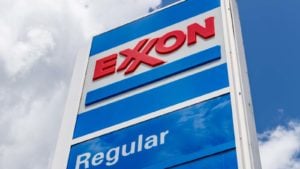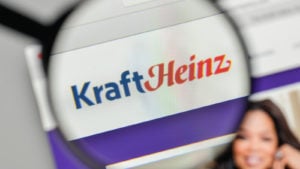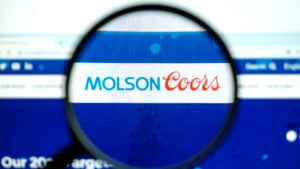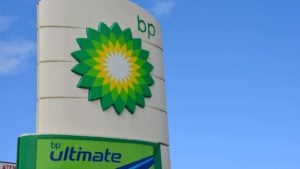After several years of people favoring growth names over value and dividend stocks, sentiment has switched gears. That’s because people are looking for sources of yield again. With the Federal Reserve cutting rates once more, the safe sources of fixed-income yield are drying up.
10-year treasury bond yields, for example have gotten cut nearly in half, from more than 3% at their recent peak to 1.7% now. Investors fear that yields will go even lower yet. It’s not hard to see why. Just look at yields in places like Germany and Japan — they’re actually below zero for 10-year bonds. Some people are suggesting that the United States could get there too the next time a recession hits.
Against that backdrop, conservative dividend stocks look like better and better alternatives to bonds for income investors. We saw a similar trend play out in 2015-16, with rate sensitive stocks soaring. Then, those gave way as the economy picked up steam and investors rushed back into big growth names like the FAANG stocks — Facebook (NASDAQ:FB), Amazon (NASDAQ:AMZN), Apple (NASDAQ:AAPL), Netflix (NASDAQ:NFLX) and Alphabet (NASDAQ:GOOG, NASDAQ:GOOGL).
Now, however, there’s a sense that another sentiment shift may be upon us. The trade war, in particular, has taken a lot of punch out of the growth stocks. That makes it a great time to be looking for more conservative dividend stocks to buy today.
Exxon Mobil (XOM)

Dividend Yield: 5.17%
After this latest round of selling, energy stocks are basically flat for the year, with the leading sector exchange-traded fund (ETF) trading back to where it was at the beginning of January. If you’re a short-term trader, energy stocks have been a terrible place to be this year. But for dividend investors, the longer this slump drags on, the better.
Take Exxon Mobil (NYSE:XOM) for example. XOM stock has gone essentially nowhere since 2005. The combination of plunging natural gas prices and the renewed weakness in crude oil scared everyone out of the sector. But with that mass departure comes opportunity.
XOM stock is now nearly yielding 5%. That’s its highest level since the early 1990s. It’s hard to overstate how pessimistic folks have gotten on oil and gas. But for the big dogs with great balance sheets, like Exxon, this is their time to shine. They can buy up assets from struggling and bankrupt rivals for cents on the dollar, and wait for the cycle to turn.
Exxon’s management is now planning for aggressive growth at the same time, so many other firms are having to pull back. In fact, Exxon is looking to double cash flow and earnings over the next five years. If it can do so, Exxon stock stock will soar. And you get a more than 4.5% dividend yield while you wait.
BP (BP)
Dividend Yield: 6.51%
Exxon isn’t the only energy stock worth considering thanks to the latest sell-off in energy shares. Dividend investors should also take a look at BP (NYSE:BP) stock at these prices. BP got itself into hot water ages ago with the Deepwater Horizon tragedy, and the stock has underperformed ever since then.
But the company’s liabilities associated with that are almost gone now. Meanwhile, the company has greatly cut costs, making itself profitable even in current low-energy-pricing conditions.
Skeptics had suggested that BP stock would have to cut its dividend to get through this difficult period for oil and gas companies. Instead, BP was able to maintain its juicy yield and even give us a small dividend hike recently.
It’s worth remembering that the United Kingdom and U.S. have a tax arrangement that ensures investors pay no foreign dividend taxes on their British shareholdings. This makes BP a nice option for dividend investors seeking to diversify their income streams beyond American sources.
Kraft Heinz (KHC)

Dividend Yield: 5.04%
It has been a great year for consumer staples stocks. In general, the sector has moved sharply higher, and many stalwarts like Hershey (NYSE:HSY) are up 30% or more and hitting new all-time highs. However, not all staples stocks have blasted off.
For example, there is Kraft Heinz (NASDAQ:KHC). Kraft Heinz suffered an unbelievable decline from a peak of $90 to $27 in just a few years. Despite involvement from investing legends including Warren Buffett and 3G Capital, Kraft Heinz imploded thanks to failing growth prospects and excessive leverage.
But don’t count out the condiments and packaged foods maker just yet. The company has sold off non-core assets and adjusted its capital allocation to shore up the balance sheet. Management is changing its branding strategy as well. And at these depressed prices, KHC stock is undervalued even compared to other struggling sector laggards, to say nothing of industry leaders like Hershey and McCormick (NYSE:MKC).
Even assuming Kraft Heinz only gets back to comparable enterprise value/EBITDA and price-to-earnings ratios with other lower-tier packaged foods stocks, it should still trade back up to $40 from the current $27 valuation.
And at this price, KHC stock yields 5%. In a world that is increasingly starved for meaningful yield, Kraft Heinz will become irresistible to income investors.
Hormel Foods (HRL)

Dividend Yield: 2.05%
Another solid choice in the staples industry at this point is Hormel Foods (NYSE:HRL) stock.
Forget about vegan meat for a second, there’s way more dividend potential in the real stuff. Hormel is known for its legacy SPAM brand, but it makes a great assortment of lunchmeats, bacon and canned meals as well.
It has acquired natural and organic meat brands to appeal to millennial consumers in recent years. It has also diversified in organic nut-butters, guacamole, Mexican salsas and other more youth-orientated products.
Hormel stock enjoyed a tremendous run the last time interest rates plummeted a few years ago; HRL stock shot up 50% in six months. Since then, Hormel has traded sideways, however, as investors moved back out of dividend stocks. In fact, HRL is down 10% from its 2016 peak while earnings are up 25% over the same period.
With investors piling back into yield plays, however, Hormel Foods should soar to new all-time highs. The African swine fever has been a bump in the road. Higher pork prices have hurt margins. But as pricing reverts to normal in 2020, Hormel’s earnings per share should soar above $2, supporting a $50 share price based on its historical median earnings ratio.
Hormel is the lowest-yielding stock on this list, at 2%. But it is a dividend king with more than 50 years of consecutive dividend hikes.
It has consistently grown its dividend (and its earnings) at more than 10% per year for decades now. This means that investors get a starting yield significantly higher than in bonds, with rapid increases to their income stream over time. With dividend aristocrats back in style, HRL stock is heading to new all-time highs.
Molson Coors Brewing (TAP)

Dividend Yield: 4.35%
Turning from food to beer, we have Molson Coors Brewing (NYSE:TAP) stock. The big macro-brewers have seen their stocks implode in recent years based on craft beer fears. And those were valid fears. But note the past tense.
In 2018, U.S. craft beer grew just 3% overall, with many of the leading craft brewers showing an outright decline in production. Arguably, craft beer over-expanded, and has now lost its cutting-edge trendiness.
Meanwhile, there’s still plenty of people that like macro beers, along with cheaper brews in general. The major beer companies still control nearly 80% of the American market after all. And Molson Coors plays to both lanes; it owns leading craft brands such as Blue Moon to complement its mainstream holdings.
Why buy TAP stock now though? For one thing, it’s at multi-year lows and its decision to rebrand and revamp should add shareholder value.
Wells Fargo (WFC)

Dividend Yield 3.96%
Investors hate bank stocks right now. In fact, other than energy, there’s little that is more disliked at the moment. And with that comes opportunity.
Interest rates have plummeted so rapidly since last year, and the bond market is now pricing in the equivalent of six Fed rate cuts to the long end of the curve.
As the rate curve heads back to more normal levels from current extremes, banks will benefit. Right now, people are pricing in a massive drop in profits for the industry going forward, but this could reverse on a dime.
Who wins? Wells Fargo (NYSE:WFC) stock is one obvious winner. Investors have shunned the bank since the account scandals a few years ago. But the bank has thrown out old management and moved on. Meanwhile, the stock price has gone nowhere for many years as capital piles up. This is allowing it to go on an aggressive shareholder return plan now.
Wells Fargo is now paying a nearly a 4% dividend yield. On top of that, the company has authorization to repurchase more than 10% of its total outstanding float over the next year. Add it up, and the bank is offering a shareholder yield of nearly 15%. Throw in any improvement in the economic outlook, and we could see WFC stock rise 25% over the next year and pay a generous dividend along the way.
PacWest Bancorp (PACW)

Dividend Yield: 6.52%
The other banking dividend stock to consider today is PacWest Bancorp (NASDAQ:PACW), which offers over 6% dividend yield at the moment.
Headquartered in Los Angeles, PacWest is a major player in the California market and currently sports a near $4.2 billion market cap. That puts it in a sweet spot, size-wise, where it may still be a buyout candidate, but it is large enough to manage the rising costs of regulation and banking technology costs.
Despite the horrid state of the California housing market in 2008, PacWest survived the crisis. In fact, its shares never came close to zero during the panic. The bank has come out stronger and is now generating record profits. Thanks to the corporate tax cuts in particular, PACW stock is now at a cheap P/E ratio of just 9.2 times its trailing earnings.
At the time of this writing, Ian Bezek owned BP, PACW, WFC, KHC, MKC, HSY, HRL, and XOM stock. You can reach him on Twitter at @irbezek.

